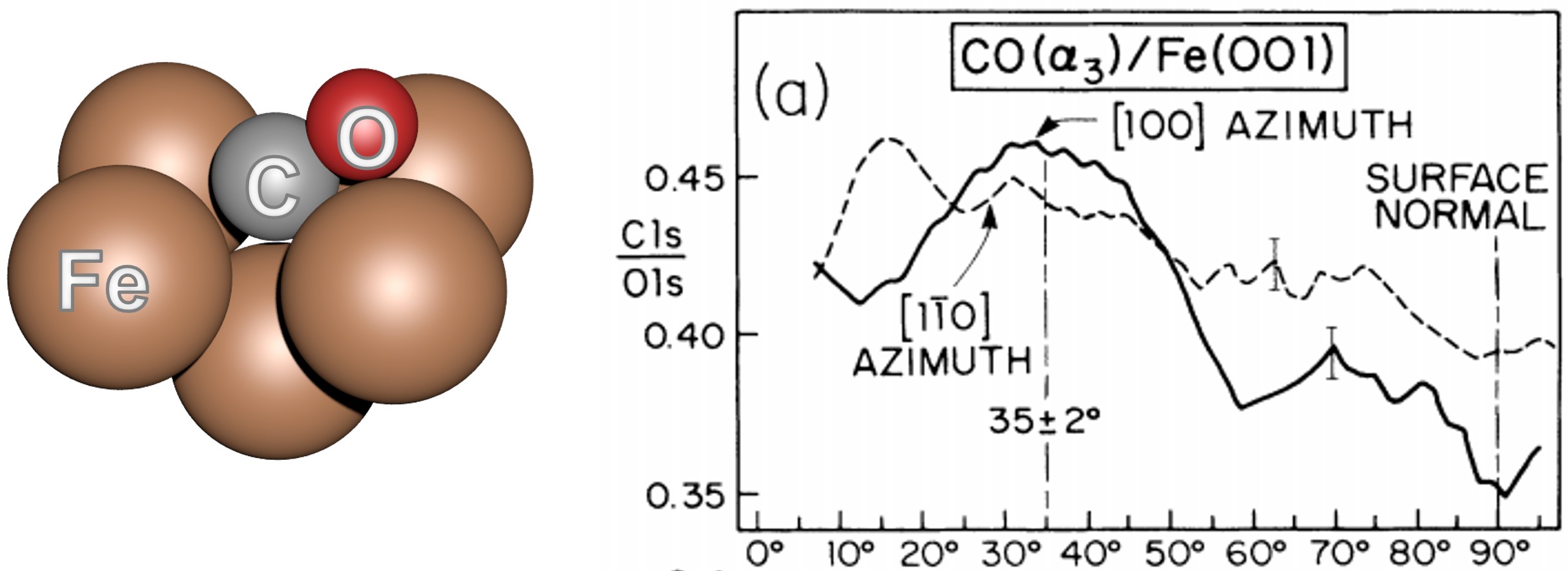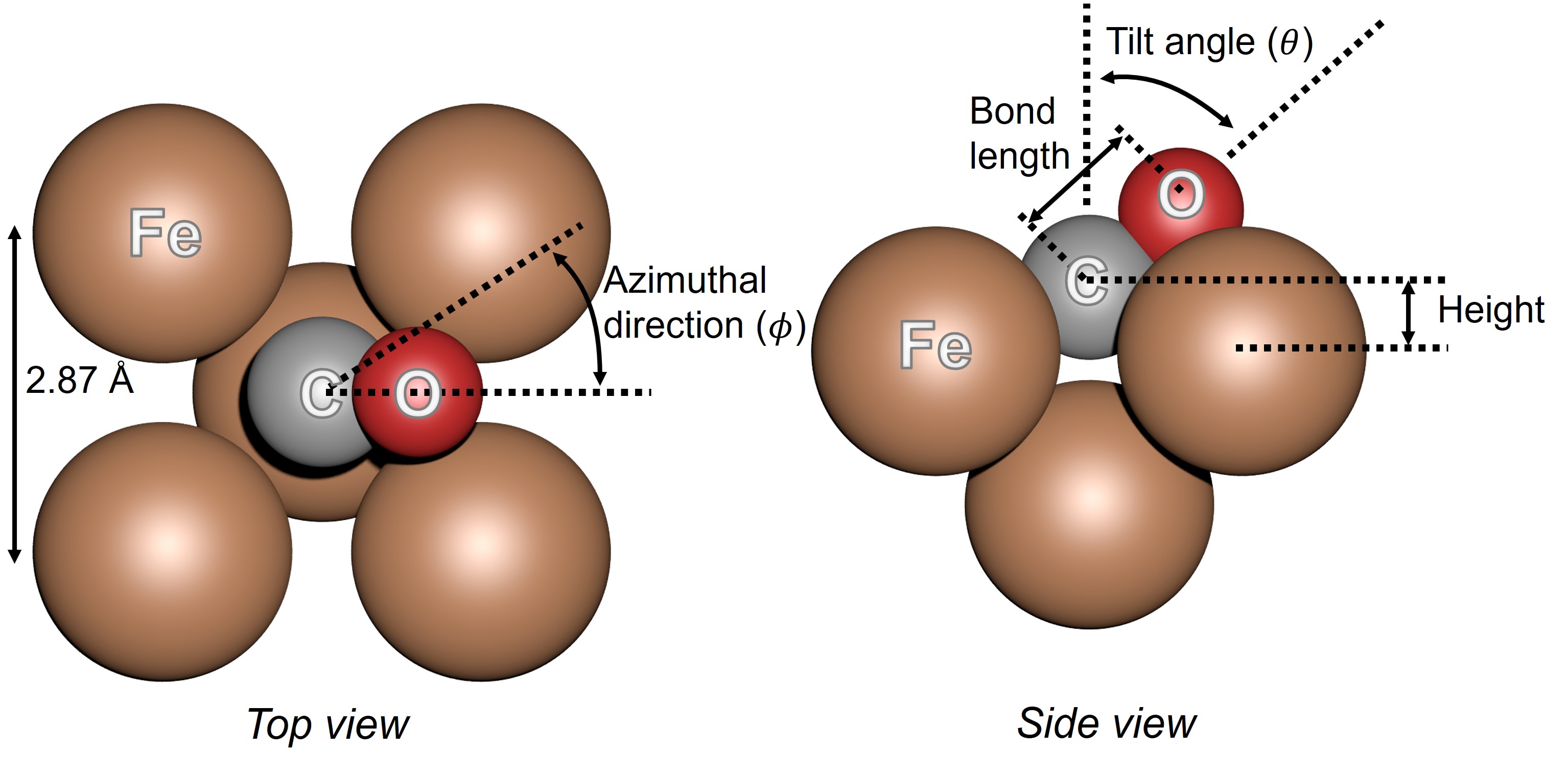Activity 9: Comparing simulation and experiment with R-factors#
In order to extract precise crystallographic information from electronic spectroscopy, we need to compare MsSpec calculations with experimental results and adjust the modelling parameters to simulate the experiment as accurately as possible.
R-factors (reliability factors) are commonly used for this task. In the following example, we will see how MsSpec can extract the adsorption geometry of a molecule.
The unusual tilt of CO molecule on Fe(001)#
The carbon monoxide molecule can be adsorbed onto a Fe(001) surface in the hollow site. It was experimentally demonstrated that the CO molecule is tilted by 55\(\pm\)2° in <100> azimuthal directions. The molecule is bonded to the Fe surface by the carbon atom and the adsorption height was estimated to be \(\sim\) 0.6 Å.
See also
based on this paper from R. S. Saiki et al. Phys. Rev. Lett. 63(3) p283-6 (1989)
We will try to reproduce the polar scan of the figure below of CO adsorbed in the hollow site of the Fe(001) surface with simple single scattering calculations with MsSpec and by using R-Factors to find the best adsorption geometry. We will use the simple cluster displayed on the left hand side of the figure.

Small cluster used for SSC calculations (left) and (right) Normalized polar scan of the C(1s) at 1202 eV for [100] and [1-10] azimths.#
Download this script and write the body of the function create_cluster. The function should return a
small cluster of 5 Fe atoms with the CO molecule adsorbed like in figure Fig. %s below. The function
will accept 4 keyword arguments to control the adsorption geometry.

Adsorption geometry of carbon monoxide on Fe(001).#
Note
Remember to use the ase.build.bulk, the msspec.utils.hemispherical_cluster and the ase.build.add_adsorbate
functions.
Now that the create_cluster function is done, look at the rest of the script. The next function is called compute_polar_scan and will obviously be used to compute the \(\theta\)-scan of the C1s for a given cluster geometry.
Finally there is the Main part that is built in two sections:
A section containing nested for loops
A final section for R-Factor analysis
Complete the nested for loops in section 1) in order to compute polar scans for CO molecule tilted from 45° to 60° with a 1° step and aligned either along the [100] direction of Fe, 30° from this direction or along [110]. The adsorption height is 0.6 Å and the bond length is 1.157 Å.
What is the best \((\theta, \phi)\) according to the R-Factor analysis
MsSpec uses 12 different R-Factors formula to compare the calculted curve to the experimental data. The set of parameters giving the best agreement according to the majority of those 12 R-factors is assumed to be the best solution. Here are the R-factors formula used in MsSpec

The 12 R-Factors used in MsSpec. The Pendry’s R-Factor is n°11.#
How many R-Factors do agree that \((\theta,\phi)=(55,0)\) gives the best agreement ?
